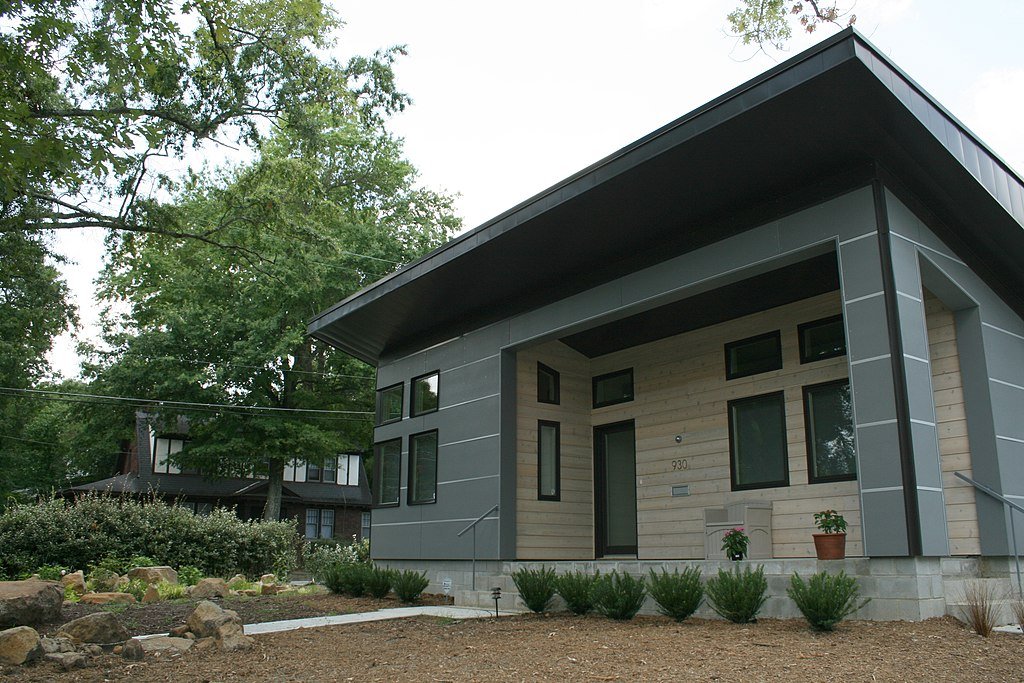Table of Contents Show
The average American wastes around 283 kilowatts hours of energy every month. This is like running your electric oven at the highest setting for six full days.
Aside from harming the planet, using large amounts of energy also means you spend a fortune on utility bills.

Perhaps you’re striving for an energy-efficient home but you’re not sure how to achieve this.
Sounds familiar? Luckily, you’ve come to the right place. Here are seven home upgrades to consider.
1. Insulate Your Home
When building an energy-efficient home, it’s important to insulate the walls including the basement and attic.
Insulation reduces the amount of heat that escapes the house in winter or enters the house during the warmer months.
Consider getting blown-in insulation as it’s affordable, improves your household’s comfort, and saves you money over time.
But make sure you find a reputable contractor who has the expertise and tools to do an effective job as it’s a long-term investment.
2. Upgrade or Replace Windows
One of the best energy-efficient home improvements is replacing old windows. This is because older windows can face wear and tear whether they’ve become rusted, painted shut, or if there’s a crack that lets a draft through.
You should also check whether the window is weak as that may be the culprit. To do this, place your hand against the inside of the glass and if it’s colder than the outside then you’re not getting enough protection.
If this the case, browse for replacement windows online to ensure your home is energy efficient.
Read Also:
3. Replace Your Light Bulbs
Not sure how to make your home energy efficient?
Traditional incandescent lightbulbs use a huge amount of electricity so replace them with more energy-efficient types.
Swap these for compact fluorescent lights (CFLs), and light-emitting diode bulbs (LEDs) as they consume less energy and last longer.
Note that energy-efficient lightbulbs have a bigger upfront cost but their longer lifetimes mean it’s a cheaper option.
4. Upgrade Your HVAC System
You’ll notice energy-efficient home designs prioritize a modern HVAC system. This includes your heating, ventilation, and air conditioning unit so yours must be inspected so that it’s not wasting energy.
It’s important to buy a new furnace and air conditioner at the same time because they’re integrated.
So when you turn your air conditioner on then you know it’s running at the maximum rated energy efficiency level.
You should also upgrade the ventilation system to improve your energy efficiency. This is composed of ducts that distribute hot and cold throughout your home so if they’re not sealed, then more energy leaks out.
5. Buy a Smart Thermostat
One thing energy-efficient homes have in common is that they have a programmable thermostat. You can set a smart thermostat to automatically turn off or reduce the heating you need if you’re asleep or away.
There’s an array of models available and you can set these to align with your weekly schedule. Plus, many thermostats indicate when you must replace air filters or if there’s a problem with your HVAC system.
You should also only buy energy-efficient appliances like your refrigerator, dishwasher, and dehumidifier.
These should have an Energy Star label as it shows that they consume less energy during use and when they’re on standby.
6. Install a Rain Water Collection System
If you live in a rainy climate, then create a rainwater collection system so you can reuse it. You don’t need an expensive, intricate system as it’s possible to store rainwater in a plastic container or an old whiskey barrel.
You can then use the harvested runoff water for irrigation, pressure washing, cleaning your vehicle, and drinking water (once you purify it).
Or, if you’re in an area that often faces droughts, then install a rainwater catchment system so you can save energy and money.
Another way roofs create an energy-efficient home is by transforming yours into a cool roof.
This is perfect for homes in hot climates as you stop your roof from absorbing the sun’s rays so you needn’t crank up the air conditioning.
For instance, paint your roof white or with specialized paint that has reflective pigments. Note that this works for metal, shingled, wooden, and flat roofs so consider this if you want to save a fortune in utility bills.
7. Optimize Your Landscape
Many of us use our landscape to harvest veggies, look visually appealing, and plant our favourite flowers. But you can also use it to improve your home’s energy efficiency.
A fantastic way for older homes to save energy is by planting shrubs and trees on the west side.
This is because in the summer, this foliage blocks infrared rays that would warm your home but in winter, these rays can pass through the bare branches.
Homes are also affected by high winds which is why we turn up the heating. But you can avoid this by planting evergreen trees at the northwest of your home as it’ll protect your property.
If you don’t want evergreens then find trees that thrive in your soil and micro-climate for the best results.
Those Are the Top Energy Efficient Home Upgrades
Hopefully, after reading this article, you now know energy-efficient home upgrades to consider.
Start by replacing your windows, installing a smart thermostat, and only buying appliances with an Energy Star sticker so you save on utility bills.
You should also insulate your home and replace light bulbs with energy-efficient ones. Good luck!
Did you find this article helpful? If yes, check out our posts on everything from Real Estate and Home.









